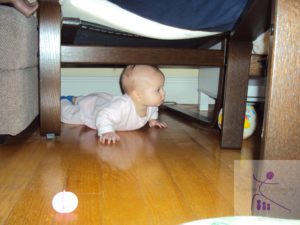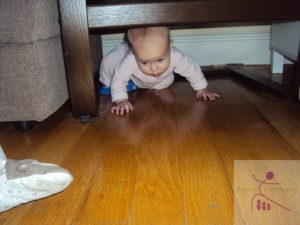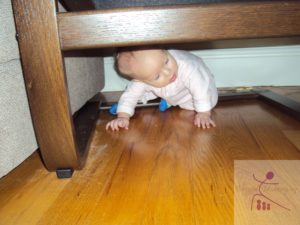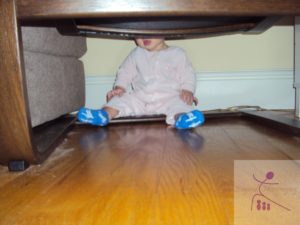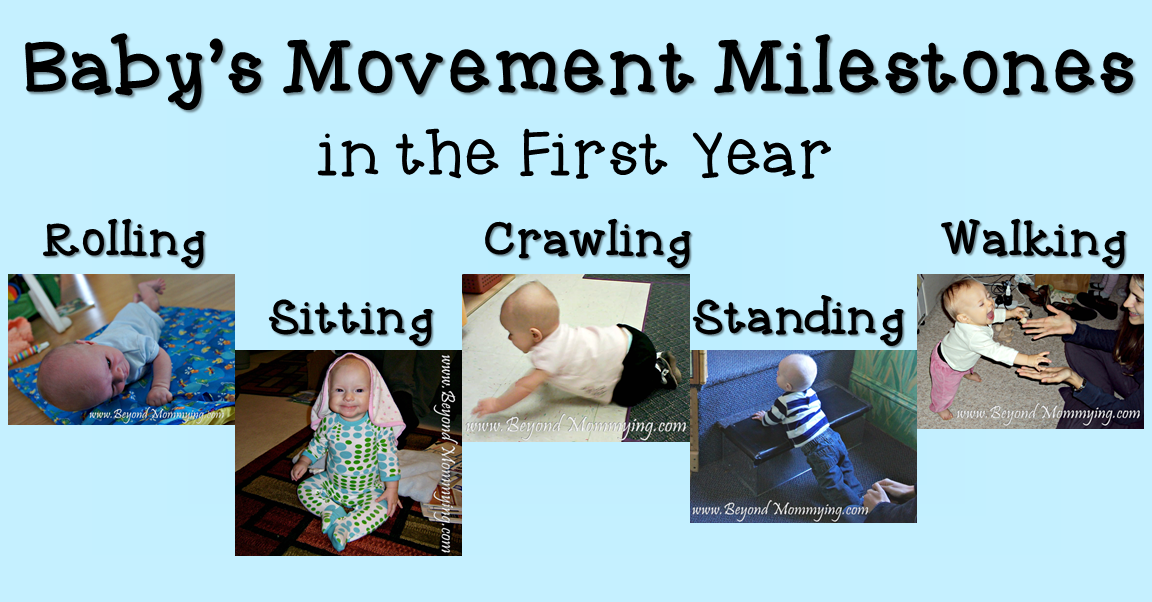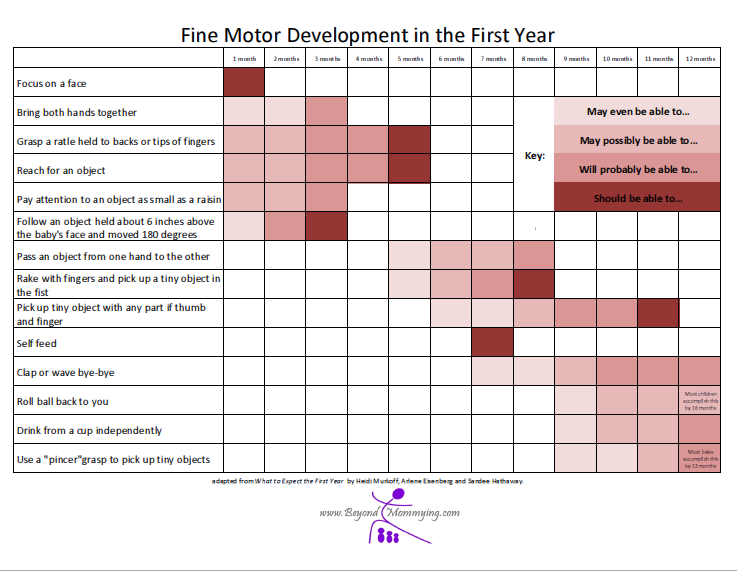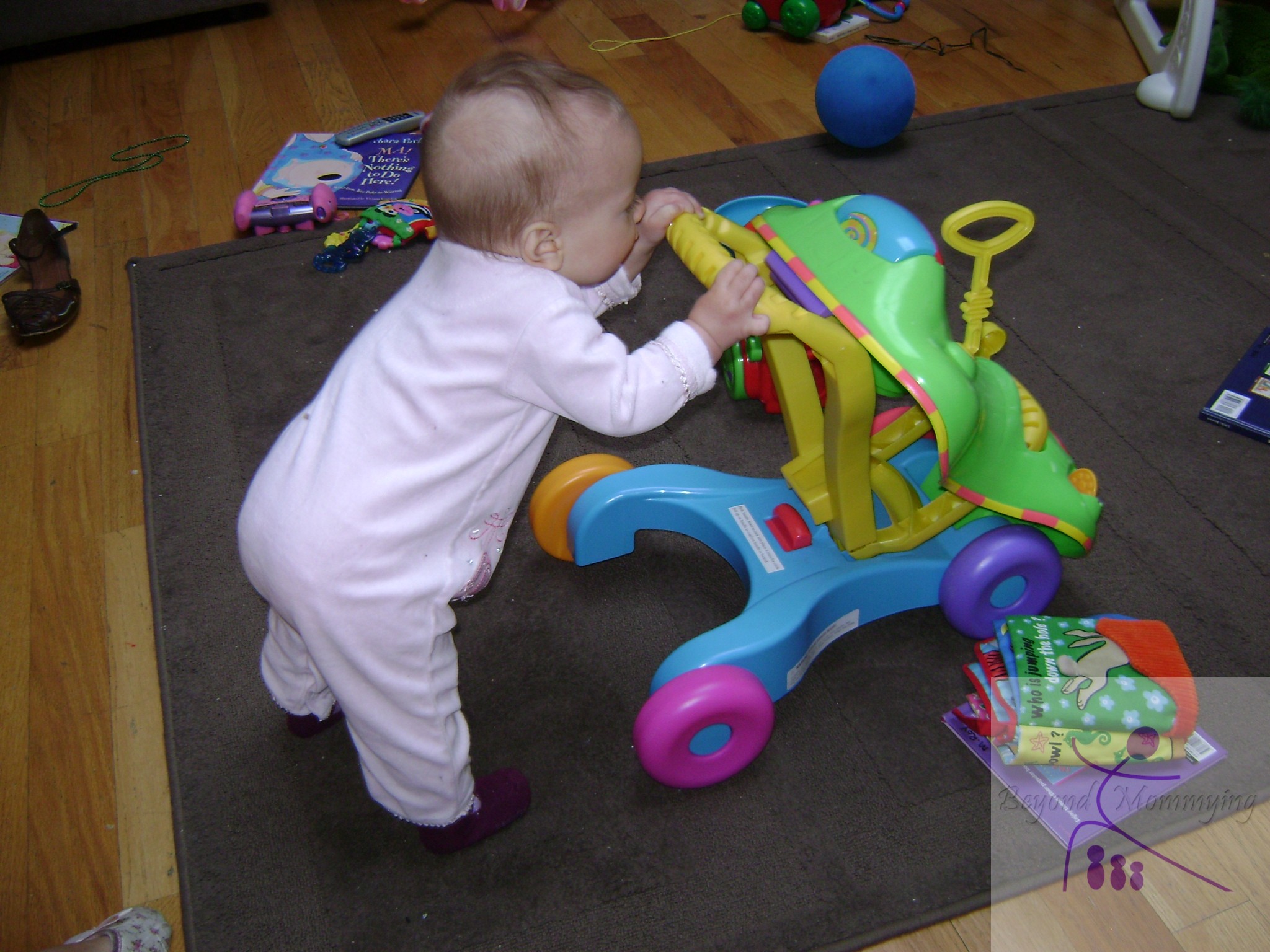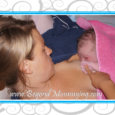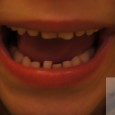Infants are often classified in two groups: mobile and immobile, those who move and those who don’t.
Most infants remain in the immobile phase for the first 6-9 months and spend the majority of their time laying and sitting and occasionally standing, usually with support. The major movement milestones of this phase are rolling and sitting.
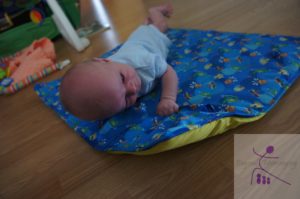 Rolling is a bit of a hybrid skill, being used as both an immobile and mobile skill. Rolling is usually the earliest gross motor milestone a baby will hit and occurs between 2 and 6 months though it can certainly happen earlier (Honeybun was 5 weeks, Sugarplum was 18 days and Doodle was just 16 days old the first time he rolled!) Most babies will begin with rolling only one way (tummy to back or back to tummy) and will add the other way a few weeks or months later. Many babies who are placed on their tummies to play but prefer to be on their backs will learn to tip their large heads which rolls them over.
Rolling is a bit of a hybrid skill, being used as both an immobile and mobile skill. Rolling is usually the earliest gross motor milestone a baby will hit and occurs between 2 and 6 months though it can certainly happen earlier (Honeybun was 5 weeks, Sugarplum was 18 days and Doodle was just 16 days old the first time he rolled!) Most babies will begin with rolling only one way (tummy to back or back to tummy) and will add the other way a few weeks or months later. Many babies who are placed on their tummies to play but prefer to be on their backs will learn to tip their large heads which rolls them over.
 The majority of babies are born with little to no head control meaning they have very floppy heads because they are not strong enough to hold their head steady. Over the first few months, babies develop the strength to hold their heads up and steady. Babies will develop the strength and coordination needed for head control when held upright with support behind their head or when playing on their tummies. Many babies don’t enjoy tummy time and most will attempt to lift their heads off the ground either to see or in protest. What start as little tiny head lifts become higher, stronger and more controlled over time.
The majority of babies are born with little to no head control meaning they have very floppy heads because they are not strong enough to hold their head steady. Over the first few months, babies develop the strength to hold their heads up and steady. Babies will develop the strength and coordination needed for head control when held upright with support behind their head or when playing on their tummies. Many babies don’t enjoy tummy time and most will attempt to lift their heads off the ground either to see or in protest. What start as little tiny head lifts become higher, stronger and more controlled over time.
You can encourage head control by placing baby on his or her tummy as much as s/he will tolerate (though don’t overdo it or leave them there when overly distressed). Lay in front of your baby and talk to him/her or place toys or other interesting objects in front of baby (mirrors and books are great) to encourage him/her to want to lift his/her head. You can also use a pillow (nursing pillows like the Boppy work great) to support baby under his/her torso which gives baby a boost and helps him/her lift his/her head.
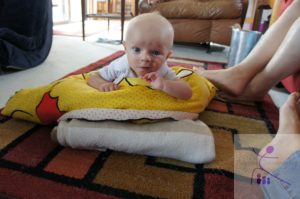
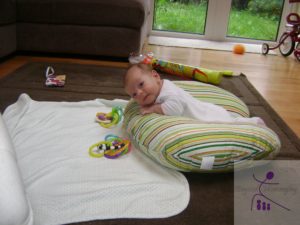
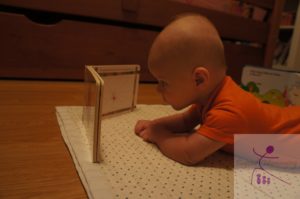
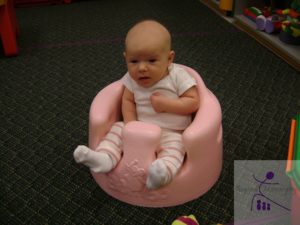 Once baby has established good head control and can easily hold their head steady for short periods of time, baby can start working on sitting. At first baby will need support while sitting.
Once baby has established good head control and can easily hold their head steady for short periods of time, baby can start working on sitting. At first baby will need support while sitting.
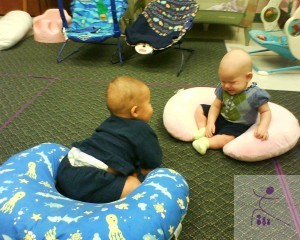 Infant seats like the Bumbo chair are helpful as they provide good back and side support and nursing pillows work great for infants who don’t need as much back and/or side support. Many infants will also go through “tri-pod” sitting phase in which they support their weight with their arms as they develop the strength and balance for independent sitting.
Infant seats like the Bumbo chair are helpful as they provide good back and side support and nursing pillows work great for infants who don’t need as much back and/or side support. Many infants will also go through “tri-pod” sitting phase in which they support their weight with their arms as they develop the strength and balance for independent sitting.
Most infants will be sitting independently by 8 months and once a baby is confident in sitting they will develop the skill of getting to sitting from laying. Babies will often push themselves up to sitting from their tummy usually going over one hip to get to their bum.
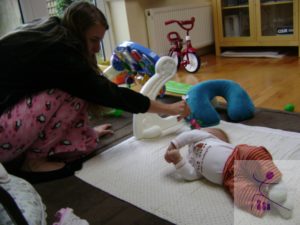 Babies who are proficient at rolling tummy to back but not back to tummy, though, may need some encouragement on learning to become proficient in rolling both directions. The best way I found to encourage rolling back to tummy was to put a toy just out of baby’s reach on the floor, level with his/her eyes. This often encourages baby to reach with the opposite arm when they realize they can’t get it with the closer arm. As they reach, I move the toy slowly away and above their head, encouraging them to reach farther (or if they grab it, you can gently pull them) causing their shoulder to lift off the ground which if take far enough will cause baby to roll to his/her tummy.
Babies who are proficient at rolling tummy to back but not back to tummy, though, may need some encouragement on learning to become proficient in rolling both directions. The best way I found to encourage rolling back to tummy was to put a toy just out of baby’s reach on the floor, level with his/her eyes. This often encourages baby to reach with the opposite arm when they realize they can’t get it with the closer arm. As they reach, I move the toy slowly away and above their head, encouraging them to reach farther (or if they grab it, you can gently pull them) causing their shoulder to lift off the ground which if take far enough will cause baby to roll to his/her tummy.
This “immobile” infant phase is my most favorite time of childhood so far (you can read through my personal breakdown of child development phases in “The Roy Theory”). Usually infants are incredibly happy once they can sit up and see the world yet they aren’t getting into everything. You can set them on the floor with some toys, walk away and when you come back they’ll still be there (though sometimes no longer sitting up!)

